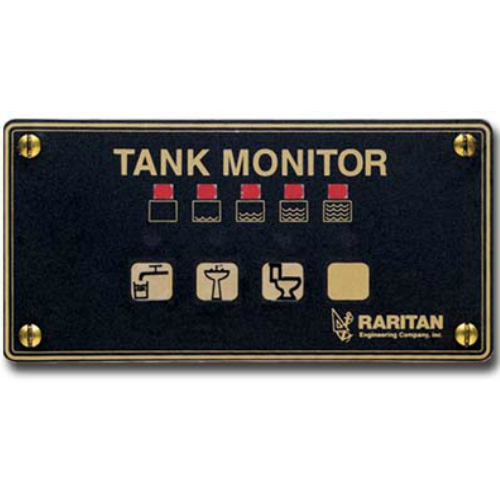Holding Tanks
Raritan offers over 200 sizes and shapes of only the best quality, extra thick-walled, 3/8” (.9cm) minimum thickness, seamless polyethylene holding and water tanks. Polyethylene is the only choice for sewage holding tanks because urine is highly corrosive. Polyethylene tanks won’t corrode, leak, shrink, bulge or crack under the weight of sewage and also won’t permeate with sewage odor. Installation diagrams have not been included because “one size fits all” installations don’t fit all boats. Raritan will help you select the best tank location for your boat, the right size tank, and the best way to install it. Then we will expedite your tank order. All fittings are installed at the factory when your tank is made, in the locations, number and sizes you need—eliminating the need for “fitting relocation kits”.
To choose your Semi - Custom Holding tank with downloadable drawings Click Here
The following should be considered while choosing a system with a marine holding tank also called Type III MSD (Marine Sanitation Device):
1. Size of holding tank
Tank should be sized to number of people on board and how long they stay on boat. Size of the tank will determine if there is enough space available to mount holding tank in bilge of boat. Following is guideline provided by US Coast Guard for sizing:
The regulations let the manufacturer determine MSD capacity. As a result, MSD manufacturers have used widely varying per capita sewage estimates in calculating the capacity of their equipment, from 35 liters per day to 35 gallons per day. In a proposed new installation, verify that the unit is large enough, based on hydraulics and waste load, not numbers of people, to process the wastewater expected to be generated on board the vessel. Installing too small MSD may allow the discharge of partially treated sewage, which violates the Act.
These calculations shall be used as guidelines, as 33 CFR 159 does not mandate capacities. Each MSD should be evaluated in terms of the vessel's size, route, service, and particular circumstances. These capacities consider only "black-water" toilet drains (on the average, each person will produce 1.5 liters of waste per day).
APPROXIMATE FLUSH CAPACITIES FOR VESSEL TOILETS DRAINING TO MARINE SANITATION DEVICES
| System Type | Liters per Flush |
|---|---|
| Conventional (Flushometer) | 18.9 |
| Recirculating | 0.38 |
| Vacuum | 1.1 |
| Hand Pump | 1.9 |
| Electric Pump | 3.8 |
LITERS OF WASTEWATER PER PERSON PER DAY BASED ON PLUMBING TYPE
| Trip Length | Liters per Flush | Plumbing System Type | ||||
|---|---|---|---|---|---|---|
| Conventional | Recirculating | Vacuum | Hand Pump | Electric | ||
| Long | Crew | 96.1 | 1.9 | 7.2 | 11.0 | 20.4 |
| Long | Crew | 96.1 | 1.9 | 7.2 | 11.0 | 20.4 |
| (Note 1) | Passenger | 96.1 | 1.9 | --N/A | 11.0 | 20.4 |
| Medium | Crew | 96.1 | 1.9 | 7.2 | 11.0 | 20.4 |
| (Note 2) | Passenger | 31.4 | 0.64 | 7.2 | 3.8 | 6.8 |
| Short | Crew | 48.1 | 0.95 | 3.6 | 7.4 | 7.2 |
| (Note 3) | Passenger | 24.0 | 0.95 | 1.9 | 2.7 | 5.1 |
Note 1: Crew and passengers aboard 24-hour/day.
Note 2: Crew aboard 24-hour/day; 2 groups of passengers aboard for 4 hours each (2 trips/day), each passenger using facilities once.
Note 3: All crew aboard 12 hr/day; 6 groups of passengers aboard for 2 hours (6 trips per day), one fourth of passengers using facilities once.
1. Odors:
(From “Marine Sanitation: Fact vs. Folklore” by Peggie Hall, copyright 1997, reprinted with permission)
ODOR CONTROL IN HOLDING TANKS
It really IS possible to have a completely odor-free system!
You’ve probably read or heard, over and over again, that the key to odor control is the “right” hose, that the “wrong” hose permeates with sewage and causes the system to stink. That’s folklore…a little truth coupled with a lot of misunderstanding. The real key to odor control is in knowing how to incorporate proven sewage management principles—the same ones used in composting and sewage treatment—into the installation of the entire system. What very few people in the marine industry have learned, and why there is so much folklore about odor, is the very nature of sewage itself and how it breaks down, what creates odor and what prevents odor from forming. Once we understood these principles and learned how to apply them to onboard systems, we were able to install systems that are completely odor-free and correct the ones that weren’t. Once you understand it—and it’s so simple!—you can do the same thing.
There are two ways to deal with holding tank odor: try to reduce it, mask it and contain it after it’s formed, by using chemicals and filters—which has never proven very successful…or prevent odor from forming in the first place.
Sewage contains both aerobic (needs oxygen) and anaerobic bacteria (functions in an airless environment); neither can function in the other’s environment. Why is that important? Because only the anaerobic bacteria in sewage produce foul-smelling gasses! Aerobic bacteria break sewage down, as does anaerobic bacteria—but aerobic bacteria do not generate odor. So as long as there is a sufficient supply of air to the tank and an aerobic bacteria treatment is added to aid that which naturally occurs in sewage, the aerobic bacteria thrive and overpower the anaerobic bacteria and the system remains odor free.
A bio-active (live aerobic bacteria) holding tank treatment, such as our own “K.O.”, works with the aerobic bacteria in sewage, eliminating odor, completely emulsifying solids and paper and preventing sludge from forming. Enzymes do little if anything—a brief respite from odor immediately after adding them, then odor begins to build again. Chemical products mask odor with another odor and they kill not only odor-causing anaerobic bacteria, but beneficial aerobic bacteria as well—not good, because the aerobic bacteria are needed in the system to break down and emulsify solids and paper. Otherwise, they only break UP and dissolve them into little tiny particles that settle to the bottom of the tank, along with chemical residue, to become sludge that turns to concrete. Chemicals, unlike bio-active products, are also unwelcome in landside sewage treatment facilities and are especially unappreciated by those living and working near them!
The bacteria in sewage produce a variety of sulfur monoxides and dioxides (which are the malodorous gasses), methane—which has no odor but is flammable—and carbon dioxide, which also has no odor but creates the environment in which the aerobic bacteria cannot function but allows the aerobic bacteria to thrive. Carbon dioxide does not rise or fall, it is ambient—like the atmosphere, but heavier than air. Without a sufficient flow of fresh air through the tank to allow it to dissipate, it simply lies like a blanket on top of any pool of sewage (whether inside hose or a holding tank) and builds, suffocating the aerobic bacteria and creating the perfect environment for the anaerobic bacteria to take over. The system literally “turns septic” and the result: a stinking boat…or at least foul gasses out the vent line every time the head is flushed.
To prevent this, let’s start with the head: the discharge hose, no matter whether it goes overboard, to a Type I or II MSD, or to a holding tank, should be installed, if at all possible, with no sags or low places where sewage can stand. When a marine head is not flushed sufficiently to clear the hose of sewage and rinse the hose behind the sewage, that sewage sits in low spots in the hose or bits of it cling to the walls of the hose—getting no air, allowing the anaerobic bacteria to thrive and produce their stinking gasses. If sewage stands in a low spot which gets no air in hose which is susceptible to a high rate of water absorption, it will permeate the hose. This is what has given rise to the myth that the “wrong” hose causes odor. Therefore, it’s important to flush your head thoroughly enough to clear the entire hose of sewage and rinse behind it. And when you leave your boat to go home, flush the head thoroughly one last time, this time with fresh water. Until holding tanks came along, the hose was the source of most odor, but incomplete flushing was the real cause.
In the holding tank, the key to odor control is the vent line; it must allow a free exchange of fresh air for the carbon dioxide generated by the sewage. Therefore, those bladder tanks which have no vent are all but guaranteed to stink; there’s no source of air into them at all. Boat builders, boat owners and boat yard personnel who install holding tanks have always viewed the vent line only as a source of enough air to allow the tank to be pumped out without collapsing and as an exhaust for methane. (Many even believe methane—which in fact is odorless—to be the source of odor.) Some take the attitude that tanks must inevitably stink, so the thing to do is run that vent line as far from people areas—cockpits, sun decks, etc.—as possible, or make the line as small as possible, or install a filter in it. All of the above actually create the very problem you want to solve.
Think of the holding tank as a stuffy room which needs to be aired. You know that even if there isn’t a hint of a breeze outside, just opening a window will allow the fresh air outside to exchange with stuffy air in the room. Open another window for cross-ventilation and the air exchanges even faster. However, just opening a skylight accomplishes nothing unless there’s also a mechanical means (an “attic fan”) of pulling the air up and out—and that won’t work unless another window is open to create airflow. But the only “window” into a holding tank is at the end of a “hallway”—the vent line. If that “hallway” is too narrow and goes around corners, takes a long and curved path, or rises more than 45 degrees above horizontal, no ambient air can find its way to the tank to dissipate and exchange itself with the gasses in it.
The tank vent line should be as short, as straight and as horizontal as possible, with no sags, no arches and no bends. The minimum I.D of the hose (which is the “standard” size in use today, but for no reason other than being “standard” in fresh water and fuel tanks) is 5/8”; we recommend that it be at least ¾”. Ideally, it should be no more than 3’ long. If it has to be longer or if running the vent line uphill more than 45 degrees off horizontal can’t be avoided or if it’s impossible to run a vent line that does not go around a corner, increase the size of the vent line to 1” or even larger. If, for instance on a sailboat, the line must go up to the deck, install a second vent line in order to create cross ventilation or install some mechanical means of forcing air through the tank. We prefer to put holding tanks in the bow of sailboats—under the v-berth— because the hull just behind the point of the bow is the only place on the hull except the transom that will never be under water even when the boat is at maximum heel; it’s the perfect place to install vent-line thru-hulls, because the thu-hull is always into the wind, forcing air into the vent line, when the boat is underway or on an anchor or mooring. The vent thru-hull should not be the same type as a fuel vent thru-hull (a cap with a slit in it), but should be a straight open bulkhead type thru-hull. On sailboats especially it’s advisable to vent off the top of the tank and not the side, because heeling can cause the contents of a half-full or more tank to run into the vent line.
Because a filter blocks the flow of air into the tank, install a vent line filter only as a last resort; the filter does trap the gasses which try to escape through the vent line, but a filter will not stop gasses from forming, and therefore from going back up the inlet hose into the boat or up the outlet hose—and eventually permeating even the best hose.
Check the vent line regularly for blockages; little insects love to build nests in them. And remember—the vent line is not an “overflow!” So try never to overfill the tank—and if you do, backflush the vent line thoroughly with water to remove any bits of sewage can clog it. It’s possible for enough air to pass through it to allow the tank to be pumped and gasses to escape, but that doesn’t mean the line is completely clear of any blockage.
Finally, the system, including the tank, should be at least nominally rinsed, through the head or back down the deck fill—with fresh or salt water—after each pump-out and occasionally with fresh water. (If your marina doesn’t have a dock water hose for this purpose, please ask them to install one. It should be separate from the potable water hose and the two hoses should never be interchanged.)
(From “Marine Sanitation: Fact vs. Folklore” by Peggie Hall, copyright 1997, reprinted with permission)
Pump out stations
It is important to make sure boat has access to nearby pump out station and these stations are functional and open for boating season. Many stations listed on EPA website may not be open or working. Only way to find out is to call these marinas and check.
Macerator pump

Organics
"If You Use a Holding Tank - You Need K.O."
K.O. IS NOT A CHEMICAL PRODUCT. K.O. utilizes live odor-killing bacteria which digests liquids, solid waste and paper, totally emulsifying them so there’s no need to add “tissue digesters” or other “boosters” to your system. The bacteria in K.O. neutralize the odor-causing elements in waste, effectively converting the contents of your holding tank to an odor-free product.
K.O. IS MORE EFFECTIVE THAN ANY CHEMICAL OR ENZYME PRODUCT. Chemicals only mask odor temporarily. Although they kill odor-causing bacteria, chemicals also kill other bacteria that suppress odor. Chemicals can actually cause the odor problems you’re trying to solve! Enzymes stimulate the breakdown of waste already in the tank, but are not effective against odor, and are diluted by new waste as it is added. Four ounces per 25 gallons of capacity is all you need, and there’s seldom any need to add K.O. between pump-outs; or need to pump out until the tank is full, making K.O. less expensive to use than lower-priced products. Unlike chemicals, the discharge from tanks treated with K.O. is welcome in on-shore sewer and septic tank systems
Sanitation hoses:
Sani/Flex Odor Shield sanitation hose:
Hose is designed especially for marine toilet and holding tank plumbing. Sani/Flex hose is different than other offerings on the market in a number of ways:
Sani/Flex hose has excellent impermeability. A special white butyl rubber compound is used, to stop sewage odor from escaping the hose. It is 15 times more resistant to odor permeation than standard PVC hose, and carries a 5 year warranty against odor permeation.
Sani/Flex hose is extremely flexible. It will bend on a radius of 3.15" without kinking. It can easily be installed on standard hose barb fittings without excessive effort, with no need to heat or lubricate the hose. These are major benefits for all installation mechanics who have spent long, difficult periods of time wrestling with other brands of sanitation hose.
Sani/Flex hose is reinforced. It contains a double steel wire helix reinforcement imbedded in the butyl rubber, plus a synthetic textile yarn, to resist bursting from high pressure and/or clogs at fittings. It is rated for 315 PSI burst pressure. It is also extremely resistant to collapsing from pump suction and/or vacuum applications.
Sani/Flex hose is abrasion and chemical-resistant. It has an outer-wrap of smooth rubber imbedded fabric to resist abrasion, ozone, seawater and common chemicals. An antibacterial additive has also been added to the outer wrap, to further reduce chances for odor-permeation.
A methyl alcohol permeability test is the standard used by industry for testing the hose’s permeability ratings. Results follow:
| Hose Type | After 20 months | After 5 years |
|---|---|---|
| Hose Type | After 20 months | After 5 years |
| Sani/Flex | 1.8% | 4.8% |
| EPDM | 22.3% | 43.1% |
| SBR | 31.6% | 61.8% |
| PU | 31.8% | 62.3% |
| PVC | 35.2% | 68.9% |
Cleaning your holding tank and hoses
Hoses in sanitation systems should be cleaned periodically to avoid calcium build up in hoses. This build up will make marine toilet pumping harder and eventually clog the system. Holding tank should also be cleaned periodically to avoid buildup of sludge in the walls and fittings of holding tank.
Raritan has a well-designed product for cleaning holding tank and hoses called “C.H. cleans hoses”.
C.H. Clean Hoses is safe, non-toxic, biodegradable and non-hazardous. C.H Clean Hoses is recommended for all plastic Holding tanks Lectra/San and Electroscan units to increases plate life by using every 6 months, it is designed to work without having to remove any piping or creating a mess. C.H. clean hoses is an effective alternative to remove uric scale and build up from black water systems. C.H. Clean Hoses dissolves clogs which cause plumbing to overflow and create nasty odors.
Tank Monitor
The Tank Monitor provides convenient, reliable, maintenance-free monitoring of one to four fresh, gray and waste water tanks. All components are mounted outside of the tanks for dependable operation, eliminating the need for special tank fittings and the inevitable maintenance of internally mounted tank sensors.
The tank monitor has no moving parts. The indicator panel clearly displays a tank’s contents (or reserve) by selecting the tank on the touch pad. The tank’s content is displayed at quarter tank intervals (i.e. EMPTY, 1/4, 1/2, 3/4 and FULL) with easy to understand international symbol labels (which are provided). The Indicator Panel is rugged, flus mounted and has no protruding parts.
The tank module senses the contents of the tank and sends a signal to the indicator panel. The electronic components are completely encapsulated, protecting them from the harshest environments.
Choose Your Holding Tank and Holding Tank Accessories
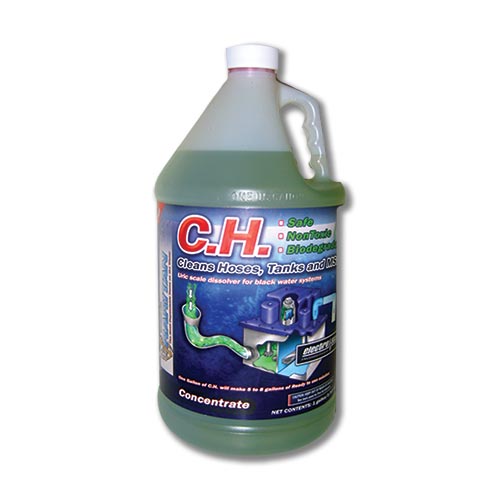
C.H. Clean Hoses
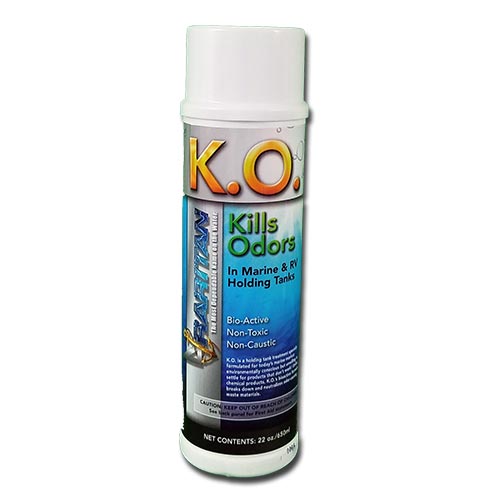
K.O. Kills Odors
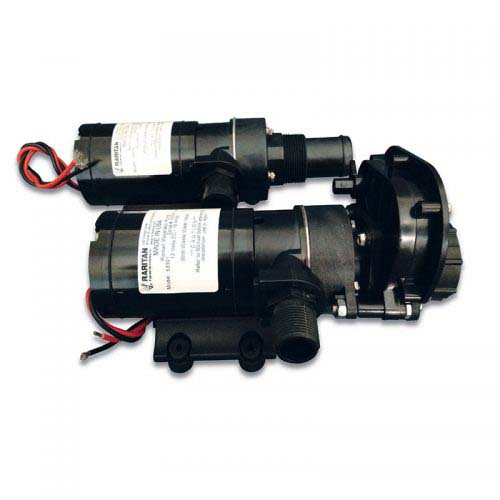
Macerator Pump
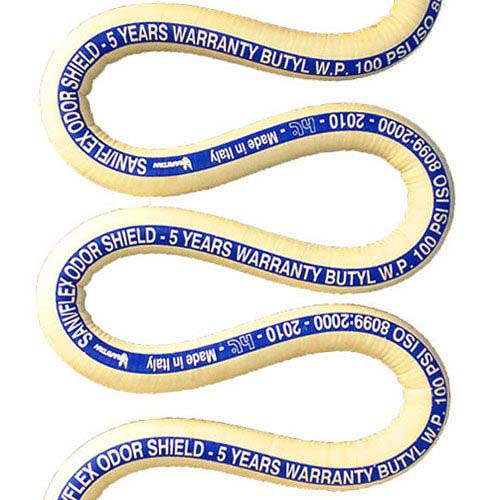
SANI/FLEX
